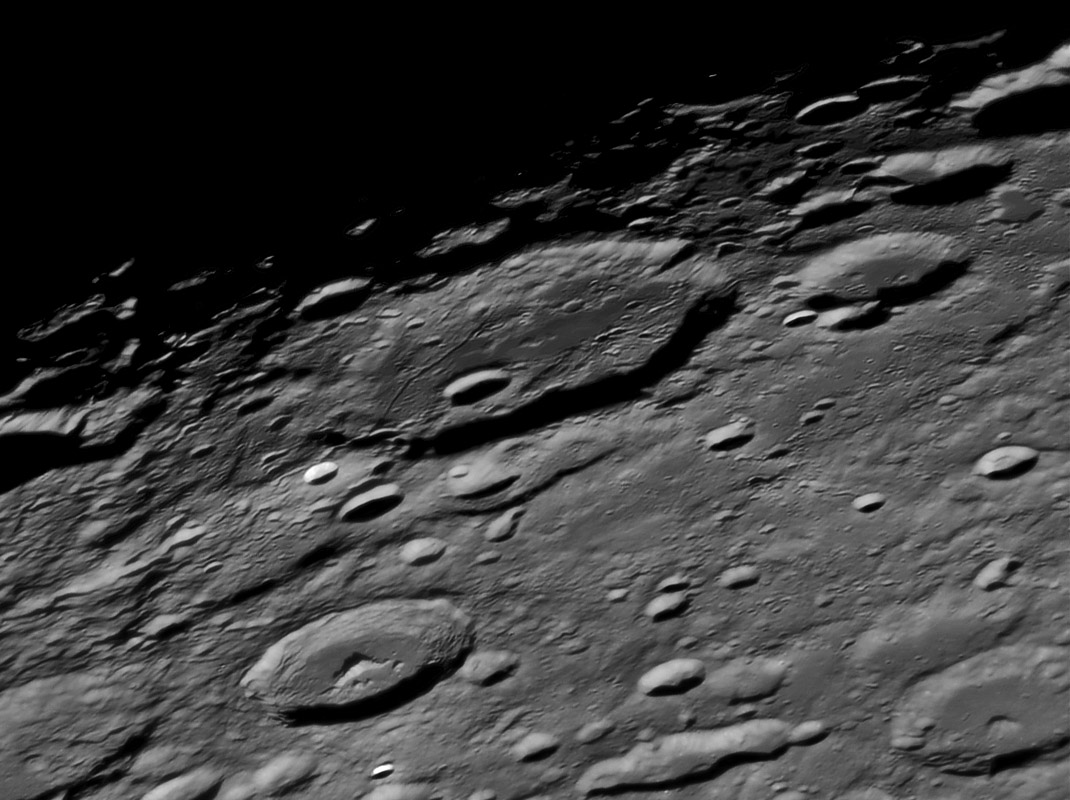Difference between revisions of "September 21, 2009"
| Line 1: | Line 1: | ||
__NOTOC__ | __NOTOC__ | ||
=Peas in a Pod= | =Peas in a Pod= | ||
| − | |||
<!-- ws:start:WikiTextHeadingRule:0:<h1> --> | <!-- ws:start:WikiTextHeadingRule:0:<h1> --> | ||
<!-- ws:start:WikiTextLocalImageRule:6:<img src="/file/view/LPOD-Sept21-09.jpg/89991871/LPOD-Sept21-09.jpg" alt="" title="" /> -->[[File:LPOD-Sept21-09.jpg|LPOD-Sept21-09.jpg]]<!-- ws:end:WikiTextLocalImageRule:6 --><br /> | <!-- ws:start:WikiTextLocalImageRule:6:<img src="/file/view/LPOD-Sept21-09.jpg/89991871/LPOD-Sept21-09.jpg" alt="" title="" /> -->[[File:LPOD-Sept21-09.jpg|LPOD-Sept21-09.jpg]]<!-- ws:end:WikiTextLocalImageRule:6 --><br /> | ||
| − | <em>image by [mailto:starman2@allegiance.tv Wes Higgins]</em><br /> | + | <em>image by [mailto:starman2@allegiance.tv" rel="nofollow Wes Higgins]</em><br /> |
<br /> | <br /> | ||
| − | Why does Furnerius have mare material on its floor? A high Sun [http://www.lpi.usra.edu/resources/cla/info/gi/ image] shows that the material is dark, and thus is mare lavas rather than perhaps some smooth basin ejecta. Furnerius is about half way between Mare Fecunditatis to the north and Mare Australe to the southeast. Is it some kind of outlier to one of these? Or is it, like some of the isolated mare patches on the farside, unrelated to any basin The Furnerius Rille is almost entirely on the higher, older and rougher floor terrain, just clipping the edge of the lavas. The rille is crisper than the crater's wall and floor so it is younger than them, even younger than the lavas. It is not radial to Nectaris, but even if it were that basin should be much older than the lava on the crater floor, and can't be a factor in the formation of the rille. I don't know the explanations for the lava and rille, but assume they are somehow related. This image provides a good view of a peapod feature at bottom right. This could have resulted from simultaneously impacting bodies - either debris from basin formation or perhaps from comet breakup. The peapod is not radial to a basin. Finally, this image gives no hint to the drastic transformation that occurs under full Moon conditions when two small craters on either side of Stevinus (center front with central peak) become brilliant [http://www.lpod.org/?m=20061008 headlights].<br /> | + | Why does Furnerius have mare material on its floor? A high Sun [http://www.lpi.usra.edu/resources/cla/info/gi/" rel="nofollow image] shows that the material is dark, and thus is mare lavas rather than perhaps some smooth basin ejecta. Furnerius is about half way between Mare Fecunditatis to the north and Mare Australe to the southeast. Is it some kind of outlier to one of these? Or is it, like some of the isolated mare patches on the farside, unrelated to any basin The Furnerius Rille is almost entirely on the higher, older and rougher floor terrain, just clipping the edge of the lavas. The rille is crisper than the crater's wall and floor so it is younger than them, even younger than the lavas. It is not radial to Nectaris, but even if it were that basin should be much older than the lava on the crater floor, and can't be a factor in the formation of the rille. I don't know the explanations for the lava and rille, but assume they are somehow related. This image provides a good view of a peapod feature at bottom right. This could have resulted from simultaneously impacting bodies - either debris from basin formation or perhaps from comet breakup. The peapod is not radial to a basin. Finally, this image gives no hint to the drastic transformation that occurs under full Moon conditions when two small craters on either side of Stevinus (center front with central peak) become brilliant [http://www.lpod.org/?m=20061008" rel="nofollow headlights].<br /> |
<br /> | <br /> | ||
| − | <em>[mailto:tychocrater@yahoo.com Chuck Wood]</em><br /> | + | <em>[mailto:tychocrater@yahoo.com" rel="nofollow Chuck Wood]</em><br /> |
<em>(Did you notice how poor the 45 year old high Sun image is? We need high res high Sun views for the entire Moon!)</em><br /> | <em>(Did you notice how poor the 45 year old high Sun image is? We need high res high Sun views for the entire Moon!)</em><br /> | ||
<br /> | <br /> | ||
Revision as of 19:13, 4 January 2015
Peas in a Pod

image by " rel="nofollow Wes Higgins
Why does Furnerius have mare material on its floor? A high Sun " rel="nofollow image shows that the material is dark, and thus is mare lavas rather than perhaps some smooth basin ejecta. Furnerius is about half way between Mare Fecunditatis to the north and Mare Australe to the southeast. Is it some kind of outlier to one of these? Or is it, like some of the isolated mare patches on the farside, unrelated to any basin The Furnerius Rille is almost entirely on the higher, older and rougher floor terrain, just clipping the edge of the lavas. The rille is crisper than the crater's wall and floor so it is younger than them, even younger than the lavas. It is not radial to Nectaris, but even if it were that basin should be much older than the lava on the crater floor, and can't be a factor in the formation of the rille. I don't know the explanations for the lava and rille, but assume they are somehow related. This image provides a good view of a peapod feature at bottom right. This could have resulted from simultaneously impacting bodies - either debris from basin formation or perhaps from comet breakup. The peapod is not radial to a basin. Finally, this image gives no hint to the drastic transformation that occurs under full Moon conditions when two small craters on either side of Stevinus (center front with central peak) become brilliant " rel="nofollow headlights.
" rel="nofollow Chuck Wood
(Did you notice how poor the 45 year old high Sun image is? We need high res high Sun views for the entire Moon!)
Technical Details
09-06-09, 8:17 UT. 18" Reflector, Infinity 2-1M camera, stack of 355 frames, MAP 2346 points
Related Links
Rükl plate 69



